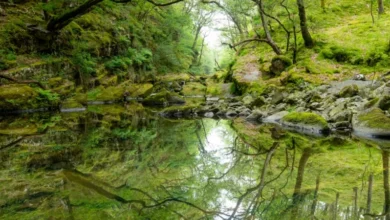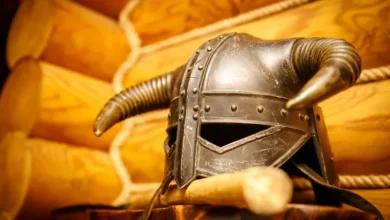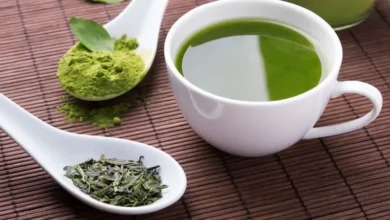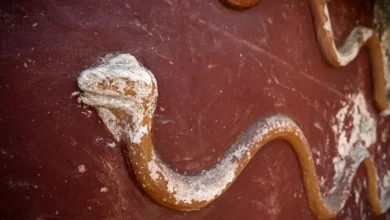The historic hammam ritual is having a renaissance in Istanbul
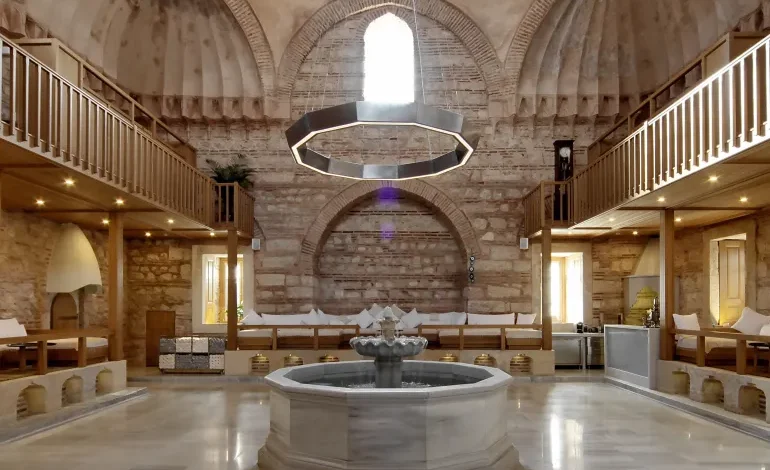
The Zeyrek neighbourhood of Istanbul is quintessentially residential; men play backgammon on makeshift tables and discarded vegetable crates line the streets. Seemingly identical grocers, butchers and spice shops alternate between one another, each drawing a handful of customers at any given time.
Turning into Itfaiye Street, I catch sight of a series of silver domes lining the horizon. Below them, at the Zeyrek Cinili hammam, there is a small commotion.Gaggles of friends and lone tourists mill around an arched stone entrance. Some of them sport slicked-back hair. Others clutch enormous bags with towels and exfoliator scrubs poking out.
The hub of activity surrounding the newly restored 16th-century bathhouse points towards a wider cultural renaissance occurring in the city: the revival of the historic hammam ritual.
Hammams, where the communal bathing tradition of being cleansed and scrubbed by an attendant takes place, were once central in Ottoman society. Originally government-run establishments, these bathhouses fell out of fashion in Istanbul during the 19th and 20th centuries. The hammams in the city have since been abolished or acquired by private entities.
Over the last decade, the bathing ritual has started to gain popularity again, with a series of hammam restorations catering to the demand.
Zeyrek Cinili is by far the most impressive. The project took almost 13 years to complete and included excavation of Byzantine cisterns below the grounds and the construction of a museum focused on hammam culture.
Other notable hammams have undergone restoration too. The 16th-century Kilic Ali Pasa hammam reopened in 2012 after a seven-year-long renovation and the 19th-century Cukurcuma hammam started welcoming guests again in 2018 after closing for renovations in 2007.
Luxury hotels have also started to incorporate the historic hammam ritual in their offering since the turn of the century. The Four Seasons Sultanahmet, Shangri-La Bosphorus and Six Senses Kocatas Mansions all boast their own glittering marble bathhouses.Eager to see what the fuss is about, I venture into the sogukluk, or cold room, of the women’s section at Zeyrek Cinili. This space is where bathers hydrate before treatment and return to afterwards for relaxation and socialising. Most bathhouses have separate sections for men and women, though some smaller establishments will have different hours for either gender to attend.
Koza Gureli Yazgan, the director of Zeyrek Cinili hammam, meets me there before my treatment. She and her now-retired mother are the formidable forces behind the restoration project.
“Renovations were initially projected to take three years but we kept making discoveries,” Yazgan explains. The Byzantine cistern, a series of intricate galleon carvings, and numerous archaeological trinkets were among the items that had to be excavated.
Determined to see the project through and restore each finding to its original glory, the pair shifted their timeline significantly.
“Our aim was to honour the history of this regional wellness practice,” Yazgan explains. “That is why we renovated the hammam in line with ancient standards. We used traditional Marmara marble and kept original design features, including the ornate tiles – or cinili – that gave the bathhouse its name.”
The walls used to be covered in these cerulean tiles, though only six remain in the women’s section. The rest of the tiles have either been lost or were ferried to museums in Europe long ago.
“Some hammams have made adjustments to appeal to modern-day visitors but our guests actually want to fully immerse themselves in the history and culture of the bathhouses. That is why we offer the traditional surroundings and ritual,” Yazgan explains.
“People are able to feel the centuries-old legacy of this practice during the bathing process. You will see,” she assures me.
Scrubbing and socialisation: Bygone rituals
When I enter the cold room, an attendant brings me a refreshing cold sherbet drink, a tradition designed to hydrate guests before their treatment. I gulp it down before making a beeline for the changing rooms. Here, I undress and wrap a pesthemal – a traditional lightweight and quick-drying cotton bathing towel – around myself.
As I enter the sicaklik (hot room) of the baths, I am struck by the sheer opulence of the space. Soaring domed ceilings are peppered with celestial openings. Streaks of sunlight pour through the star-shaped slits, bouncing off the marble walls and benches in a dazzling haze.
Around me, women stretch out across hot stone slabs or curl up on marble steps as their attendant scrubs them. Echoes of women laughing and talking among themselves periodically interrupt the gentle sounds of running water.
My attendant tells me to lie on the central hexagonal table to acclimate to the temperature. After 10 minutes pass, she collects me and guides me to a brass washing basin. Here, I am vigorously scrubbed with a kese, a rough exfoliating mitt.
Then, mounds of foam are poured onto me and the attendants’ agile hands dart in and out to massage my legs. Lashings of cold water follow, cleaning me completely before I am guided back into the cold room to relax.
Perched in a cushioned alcove, I watch groups of friends chatting and a mother and daughter bickering humorously in the corner.
Kate Fleet, the director of the Skilliter Centre for Ottoman Studies at the University of Cambridge, explained how hammams have traditionally been a place for people to socialise.
“The act of cleansing oneself is central in Islam, so bathhouses played a key role in Ottoman society,” Fleet said.



